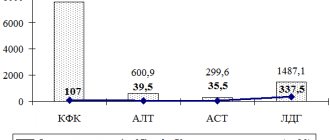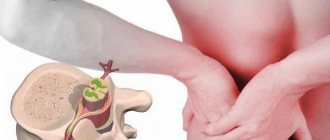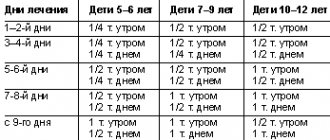Rett syndrome, what is it? Causes and treatment
Rett syndrome is a progressive degenerative disease of the central nervous system, named after the scientist who first described this pathology.
The syndrome is diagnosed during the first 2 years of a child’s life, and it usually occurs in children with normal pregnancy, childbirth and full development in the first months of life (sometimes up to 1.5 years). Then development stops and regression of all forms of mental activity occurs, which is accompanied by the emergence of autism, motor stereotypy, and progressive motor decline. Subsequently, this disease leads to disability and even death.
The main manifestations of the disease are the reverse development of already acquired motor and speech skills between the ages of 1.5 and 3-4 years, repeated stereotypical and uncontrolled hand movements, and mental retardation.
What it is?
Rett syndrome is a psychoneurological hereditary disease, occurs almost exclusively in girls with a frequency of 1:10,000 - 1:15,000, and is the cause of severe mental retardation in girls.
The disease was first described by the Austrian neurologist Andreas Rett in 1966. The child’s development proceeds normally until 6–18 months, but then the girl’s acquired speech, motor, and subject-role skills begin to disappear.
This condition is characterized by stereotypical, monotonous movements of the hands, rubbing and wringing of the hands, which are not of a purposeful nature. Speech becomes difficult, responses become monotonous or echolalic, and at times speech completely disappears (mutism).
Historical information
In 1954, the above-mentioned Austrian doctor Andreas Rhett examined two girls, as a result of which, in addition to mental retardation, he noted that they had some stereotypical movements reminiscent of “hand washing” or in the form of “squeezing hands.” He found several similar cases in his notes, which prompted him to think about the uniqueness of this disease. Dr. Rhett, having filmed his patients, went looking for children with similar symptoms throughout Europe.
In 1966, he published his research in Austria in a pair of German journals. However, they did not receive worldwide publicity, even after publication in 1977 in English. Only after the publication of the Swedish researcher B. Hagberg and his colleagues in 1983, the disease was named “Rett syndrome” in honor of its discoverer and identified as a separate nosological unit.
Causes
In the 90s, there was a hypothesis that Rett syndrome is a specific disorder that is associated with gene mutations localized on the X chromosome; caused by a dominant trait and in boys cannot be combined with life. Subsequently, the transmission of the mutant gene by the father's X chromosome was confirmed by the fact that this hereditary pathology can very rarely occur in boys, since they receive the Y chromosome from their father. That is why, with the family type of inheritance of Rett syndrome, boys in such families are born practically healthy.
Currently, there is evidence of the hereditary nature of the disease. The genetic cause of Rett syndrome is associated with an altered X chromosome and mutations that occur in genes that regulate the replication process. In this case, there is a deficiency of certain proteins that regulate this growth, and their cholinergic function is also impaired.
Rett syndrome has been hypothesized to be a developmental disorder characterized by a deficiency of neurotrophic factors. Thus, the basal ganglia, lower motor neurons are affected, and the spinal cord and hypothalamus are involved. Analyzing morphological changes, scientists came to the conclusion that there is a slowdown in brain development from birth, which completely stops growing by the age of four. And also in such children there is a slowdown in the growth of the body and some somatic organs.
Causes
Approximately 99% of cases of the disease are spontaneous; a defective gene can appear “out of nowhere.” Familial transmission of Rett syndrome occurs in less than 1%. There have been cases when the disease was transmitted from a healthy mother or a mother who had a not completely defective gene. New mutations in 70% of cases originate from the father's germ cells.
The cause of degradation is a mutation in the MECP2 gene on the arm of the X chromosome, which is responsible for protein synthesis, which should be suppressed over time, but due to the fact that the gene is damaged, this does not happen, and subsequently brain structures develop incorrectly.
Stages of development
Rett syndrome develops over a long period of time, so the disease is usually divided into several stages depending on the deterioration of the patient’s condition:
- Stagnation is a temporary suspension of the disease, in which there is no increase in symptoms. Lasts from 6-18 months or more. The child loses interest in surrounding events, muscle hypotonia, and slower growth of the head and limbs are noticeable.
- Deterioration of condition. The stage lasts from 1 year to 3-4 years. If a child has mastered the skills of speech and movement, they gradually disappear. Stereotyped hand manipulations, disturbances in the pulmonary system (hyperventilation, shortness of breath, sudden cessation of breathing), incoordination of movements, and unmotivated anxiety appear. Already at stage 2, convulsive seizures appear, the treatment of which is not effective.
- Relative stability, this stage can continue until early school age. Mental insufficiency, convulsions, low weight gain, and impaired emotional contact with others are noted. Epileptic seizures are replaced by inhibition of the nervous system.
- The final stage is characterized by a decrease in the frequency of seizures, but cachexia, scoliosis, and severe respiratory problems appear. Inability to move is possible; short stature of the limbs and small head circumference are determined.
The characteristic symptoms inherent in a particular stage are not one hundred percent arbitrary and may vary depending on the transience of the disease and individual clinical cases.
How the disease develops
Rett syndrome in children is a rather insidious disease. At birth, it practically does not manifest itself. Its first symptoms appear within 6 months. up to one and a half years. However, there are still some barely noticeable signs in the first half of the year. But they are so insignificant that they do not attract attention.
This is what the mother of one of the girls with the syndrome says about the first half of her life. She attached importance to these little things only after 1 year and 7 months had passed since the birth of her daughter, when the manifestations had already become obvious. Among the harbingers of the disease, she noted that her baby began to hold her head at 3 months, and not at 2, as expected. At 6 months she could not sit yet, and she began to walk only at 1 year and 4 months. She developed normally psychologically, and began to speak early, but these were not the standard words “mom”, “dad”, but “bunny”, “bear”, etc.
At 1 year and 7 months. she stopped recognizing her parents and did not seem to need them. I spent the whole day doing one monotonous activity: throwing a ball or pushing a stroller. She walked in circles for hours until she was stopped or she stammered. This stereotypical behavior is called field behavior, when the action drags on the patient and he cannot do anything.
At the age of four, epileptoid seizures joined the symptoms. However, upon reaching school age, the girl was home-schooled and made some progress.
12–6 years – this was a period of remission, when the disease practically did not bother me. But from the age of 16, new, deeper problems appeared related to bone deformations and diseases of the internal organs. One of the girl’s legs was almost 10 cm shorter than the other, which could not but interfere with walking. At 20 years old, she weighed only 24 kg and was 158 cm tall.
Typically, SR occurs in 4 stages.
The first stage , which, as a rule, starts from 6 months to one and a half years, is manifested by an increase in irritability and lability of mood in the child. Episodes of crying and psychomotor agitation are replaced by increasing passivity. The baby moves aimlessly around the room and loses interest in toys. But contact with the mother remains.
This is how a woman describes her daughter’s behavior at the beginning of the disease: she screamed all day long without stopping, banged her head against the walls, and could not sleep. No matter what we did, she did not calm down. It was real hell. But what was more depressing was that not a single doctor could make a clear diagnosis.
A disproportion of the head and limbs in relation to the body develops. They become disproportionately small. Growth slows and muscle tone decreases.
The second stage , which lasts several years, is characterized by a variety of symptoms. A decrease in intellectual abilities immediately attracts attention, and mental dementia develops. Almost all acquired skills regress. Speech completely disappears or progresses to the level of echolalia - mechanical repetition of what was heard.
Acquired motor skills and object-role behavior are lost and replaced by motor stereotypes. A characteristic symptom: numerous repetitive movements reminiscent of hand washing. In addition, the child constantly wrings or rubs them, waves them, and claps his hands. Clenching of the fingers is quite normal at 4 months, but at a later age it indicates a stoppage of development. The baby loses his grasp reflex and is unable to make rotational movements with his hands.
Gradually, physical activity fades away. The gait is disturbed, the child walks without bending his knees.
The third stage lasts 10 years or more, and is characterized by the development of persistent, profound dementia, even idiocy. There is a complete loss of the ability to speak and understand speech addressed to the child. A tremor of the whole body appears, aggravating movements. Convulsive seizures intensify.
The fourth, final stage is a period of worsening of previously manifested symptoms. Persistent loss of mental abilities, motor skills, development of muscular dystrophies leading to complete immobility.
The life expectancy of such patients on average ranges up to 30 years, although there are cases when they lived up to 50 years of age.
Symptoms of Rett syndrome
Separately, attention should be paid to the main symptoms by which Rett syndrome is determined, since in medical practice there have been cases where, due to an incorrect interpretation of the signs of the disease, a completely different diagnosis was made, which ultimately led to a rapid death.
Rett syndrome is defined by the following criteria:
- Pronounced microcephaly. In the period after birth, the child has a normal ratio of the size of the head to the body. Gradually, head growth slows down, which is caused by a decrease in brain size.
- Developing scoliosis. Spinal disorders are typical for all children suffering from this disease. The cause of back curvature is muscle dystonia.
- Mental development. Rett syndrome is characterized by profound mental retardation and a lack of rich cognitive activity, which is usually present in all young children. Many patients initially acquire the skills of speaking and perceiving the world around them, but over time they completely lose them. The child has a noticeable absence of any expressive or impressive communication with the environment. To determine disorders in mental development, specialists use standardized psychological tests.
- Specific hand movements. Children lose the ability to hold any objects, be it a toy or a bottle of milk. In this case, monotonous hand movements occur, reminiscent of washing under a tap, and are also characterized by squeezing, fingering, clapping at chest level, face and behind the back. The patient may also suck or bite his hands, or randomly hit himself with them on different parts of the body.
- Convulsive seizures. In almost 80% of cases, girls suffer from epileptic seizures, which are also accompanied by partial seizures, drop attacks, and tonic-clonic type of seizure. Rett syndrome is characterized by the following signs of the formation of a pre-seizure state: tremors, difficulty breathing, sudden movements, gaze directed at one point with complete numbness of the body. These symptoms are often treated with anticonvulsants, but such drugs do not provide any positive effect, since the listed symptoms do not belong to the group of convulsive diseases, but represent only Rett syndrome.
- Neurochemical symptoms. In a study of patients who died with severe Rett syndrome, scientists determined that their brain sizes were either 12% or 24% smaller than normal, depending on the patient's age group. In the cerebellum, cerebral cortex and dorsal ganglia, neuronal deficits and gliosis were observed, as well as reduced levels of pigmentation. According to morphological studies, by the age of four, people suffering from Rett syndrome were diagnosed with a complete stop in brain development and slower growth of other organs and parts of the body.
Stages
There are 4 stages of Rett syndrome after the pathology is detected:
First
(starts at 6 months). Also called the stagnation stage. Lasts 2-4 months. Psychomotor development stops, the growth of the bones of the skeleton, head, and feet slows down. There is a loss of social smile, and interest in games disappears. Muscle hypotonia (decreased muscle tone) is observed. The diagnosis is still difficult to establish.
Second
(starts from 1-3 years). Called the stage of rapid regression (destructive). At the second stage, a decrease in psychomotor development, a gradual loss of skills is recorded, and stereotypical motor acts appear, which are indicative. Stereotypes are expressed by tapping palms on the forehead, movements like “washing hands,” wringing, and grinning. The formation of babble, expressive speech is lost, and the reproduction of individual sounds is typical. Periodic screams, problems falling asleep.
Third
(starts from 3 to 10 years). Pseudostatic stage. There is a slight lull in the syndrome, autistic symptoms disappear, and sleep returns to normal. Stereotypes of the upper extremities are preserved, and there is a disorder in gnosis (the ability to memorize objects, understand them, perceive them) and praxis (the ability to perform a number of learned actions). Due to impaired conduction of nerve impulses, tremor (involuntary trembling of body parts), dynamic or static ataxia (miscoordination), muscle dystonia (uncoordinated muscle contraction) occurs. Epileptic seizures, periods of hyperventilation (excess oxygen followed by intense breathing), and fainting occur.
Fourth
(starts after 10 years). Also called the stage of late movement disorders. There are pronounced motor disorders: rigidity of the muscles of the lower extremities (stiffness, numbness), increased paresis (paralysis), scoliosis, kyphoscoliosis. Closer to adolescence, the ability to move independently is lost.
If the disease progresses rapidly, this indicates a high risk of sudden death.
Diagnostics
A consultation with a psychiatrist begins with a medical history. During a conversation with parents, the specialist finds out:
- whether pregnancy and childbirth proceeded normally;
- how the child developed during the first 6–18 months;
- what is the dynamics of head growth;
- when the child began to lose acquired skills;
- whether the patient has stereotypical hand movements, seizures, speech, breathing, gait and coordination disorders, delayed psychomotor development.
For an accurate diagnosis, the doctor often prescribes additional examinations:
- EEG (electroencephalogram), which measures the bioelectrical activity of the brain (a slow background rhythm is evidence of a mutation in the X chromosome);
- CT scan of the brain, which can detect changes indicating cessation of brain development;
- Ultrasound of internal organs, giving an idea of the degree of their development.
Without testing data, Rett syndrome may be confused with autism. Both of these conditions are characterized by:
- decreased learning ability;
- loss of speech;
- lack of control over the pelvic organs;
- withdrawal from the outside world;
- lack of eye contact;
- reluctance to make emotional and social contact;
- disturbance of body sensitivity;
- causeless screaming and crying.
You can distinguish one disease from another using differential diagnosis, developed in 1988 at the International Conference on Rett Syndrome.
Differential medical diagnostic data:
| Symptom Description | Manifestation in Rett syndrome | Manifestation in early autism |
| Slow growth of hands, feet and head | A characteristic symptom of Rett syndrome | No sign |
| Developmental delay between six months and one year of age | Doesn't appear | Often observed |
| Respiratory disorders | Often observed | Do not appear |
| Stereotypical hand movements | Repeated monotonous hand movements in the waist area | Varied and complex movements not limited to the belt area |
| Epileptic seizures | Often repeated | Rarely appear |
| Coordination of movements | Progressive loss of coordination leading to complete immobility | Movement and gait are almost normal, but seem mannered |
Using differential diagnostics, not only doctors, but also parents themselves can distinguish autism from Rett syndrome.
Symptoms
One of the most pronounced symptoms is psycho-speech retardation and movement disorders.
At first, the baby develops normally, learns to speak, perform targeted manipulations with his hands, and walk, but after 6 or 18 months all previously acquired skills are lost. Degradation occurs in the shortest period.
The following clinical picture is observed:
- Partial or complete loss of fine motor skills (finger manipulation).
- Loss of babbling or learned words (mutism).
- Stereotypical movement of hands in front of oneself (depicting washing, patting, putting hands in mouth).
- Impaired communication abilities (avoidance of contact with others, detachment, loss of interest in games).
- Autostimulation (rocking, mooing, playing with your tongue).
- Slow head growth.
Additionally, the following symptoms may appear:
- Hyperventilation, involuntary holding of breath (apnea). Quite a common symptom. Apoe can last up to 40 seconds, and since breathing is linked to the heart rate, it harms the heart. Oxygen starvation of the heart muscle may occur. Hyperventilation is manifested by the intensity of breathing, which increases the body's need for oxygen.
- Swallowing excess air when eating food. Sometimes excessive accumulation of air causes pronounced bloating (in 5%).
- Bruxism (teeth grinding). It happens due to involuntary clenching of the jaws.
- Dyspraxia (clumsiness), apraxic gait (there is no weakness in the legs, but it is difficult to lift the feet off the floor, resulting in a shuffling gait).
- Curvature of the back. At early school age, spinal deformation is possible. If the curvature is excessive, surgical intervention is required.
- Incorrect leg position. With the onset of school age, children experience deformation of the position of their feet, which makes it difficult to stand and walk. The deformations are asymmetrical, more pronounced on the right.
- Hypoplasticity of the feet. It is noticeable that the feet are disproportionately small. Due to impaired tissue nutrition during adolescence, the skin becomes bluish and the feet become cold.
- Epileptic seizures (focal epilepsy).
- Inappropriate laughter in the middle of the night or high-pitched screams. The child begins to laugh at night, and the laughter continues for several hours. Adolescents experience prolonged high-pitched screams. Research shows that they are not caused by pain, but are a consequence of brain dysfunction.
- Sleep problems.
- Delayed response to pain. The reaction usually lasts quite a long time.
- Communication through gaze. To compensate for the lack of speech or gestures, children develop communication through their gaze. They look at objects that they want to draw others' attention to.
Curvature of the spine in Rett syndrome
In addition to typical symptoms, feeding difficulties are noted. Due to factors such as involuntary turning of the tongue, difficulty chewing and problems with swallowing, the eating process slows down significantly and weight decreases.
There is a failure in the regulation of the tone of the muscular walls of the gastrointestinal tract, which contributes to vomiting, constipation, or backflow of food into the esophagus from the stomach (gastroesophageal reflux). As a result of these manifestations, the baby develops fear and aversion to food.
Treatment
At this stage of medical development, Rett syndrome is an incurable disease. However, with the help of medications, rehabilitation techniques and a special diet, it is possible to improve the child’s condition, prevent serious body deformations and improve the patient’s quality of life.
To improve your general condition and alleviate symptoms, your doctor may prescribe the following medications:
- antiparkinsonian drugs (Bromocriptine, Perlodel);
- nootropics to improve brain function (Cortexin, Cerebrolysin, Ceraxon);
- medications to regulate the biological regime of day and night (Melatonin);
- drugs to calm the nervous system and correct behavior (Noofen, Phenibut, Glycine);
- antiepileptic drugs to reduce the number of seizures (Carbamazepine, Lamotrigine);
- means to support the functioning of internal organs: heart, liver, stomach, intestines, pancreas.
With severe epilepsy, taking anticonvulsants may not be effective. Often children with Rett syndrome “outgrow” the seizures themselves: by the age of 10, seizures become rare and sometimes go away altogether.
Reasons for appearance
Although a hereditary predisposition to the disease has already been confirmed, the question of the very nature of Rett's pathology remains open.
The syndrome is caused by mutations in genes associated with the fragile X chromosome. As a result of this pathogenesis, morphological changes in the brain occur, which stops its growth in the fourth year of a child’s life. “Interrupted development” of the brain, in turn, leads to autonomic disorders and problems of the musculoskeletal system. Muscles atrophy, epileptic seizures appear, the development of internal organs and body growth slows down.
Rehabilitation
The rehabilitation program may include:
- Consultations with a psychologist and speech therapist - once a week.
- Music therapy increases a child’s communicative activity.
- Massage and physical therapy are aimed at strengthening muscles and increasing their tone.
The method invented by the French otolaryngologist Alfred Tomatis has good reviews. The goal is to re-teach the child the process of listening, which improves the ability to learn and master languages, increases creativity and has a positive effect on the baby's social behavior.
- Art therapy and dolphin therapy have a positive effect on the psycho-emotional state of the child.
- Hippotherapy (therapeutic horse riding) and hydrotherapy (showers, dousing, rubbing) have a biomechanical effect on the child’s body and strengthens muscles.
- ABA therapy improves the social adaptation of patients. Some complex actions (contact, creative play, speech) are broken down into small parts for the child. In the future they will be combined into one large block.
It is worth noting that visiting an osteopath has a good therapeutic effect. Improvement is observed after just a few sessions.
Approaches to treatment and rehabilitation for Rett syndrome
Goals of therapy:
- elimination of psychopathological disorders;
- achieving drug remission;
- stabilization of the patient's condition.
Treatment tactics for satisfactory and/or non-severe levels of Rett syndrome are based on outpatient therapy. In case of a complicated clinical picture or ineffectiveness of outpatient measures, a decision is made on hospitalization. Treatment includes drug methods and non-drug therapy (compliance therapy, psychotherapy, occupational therapy).
In the future, measures are taken to form and strengthen compliance (the patient’s voluntary adherence to the prescribed treatment regimen). A competent educational approach is required that helps patients develop adaptive skills.
Nutritional Features
Feeding a sick child presents certain difficulties. Many girls experience increased salivation and poor oral health, so feeding them is a real problem. Some children have a good appetite and enjoy eating their favorite foods. But they all eat very slowly; the process of eating can last up to an hour and a half. As for drinking, almost half of sick babies have difficulties with swallowing, which are manifested by choking, coughing and can threaten liquid getting into the respiratory tract.
- Children with Rett syndrome have difficulty chewing food containing coarse fiber (meat, raw vegetables, fruits), so it must be crushed and given as a puree. It is better to offer side dishes in small pieces or mashed. During feeding, you need to make sure that the baby's head is at the correct angle and does not fall back.
- In some cases, when the process of absorbing food becomes too problematic and painful, it makes sense to feed the child through a tube with special nutritional mixtures. This option can significantly improve the baby’s quality of life and can become a real salvation for him.
Many children suffer from nausea and often refuse to eat, so it can be very difficult to feed them; such babies quickly lose weight. Therefore, food should be enriched with proteins and fats, sufficiently high in calories and fortified. It is recommended to feed the child in small portions and often (every 3 hours) so as not to overload the digestive system. Young children are given fortified milk or formula.
Why is the syndrome diagnosed only in girls?
Every 90 minutes, a newborn with Rett syndrome is born. Only girls suffer from this disease.
According to the dominant type of inheritance, predominantly girls will be affected, since the gene (MECP2) located on the arm of the X chromosome mutates. Girls have 2 such chromosomes. Boys do not have a paired X chromosome (they have XY), so any mutation of the gene associated with it ends in death among male infants, usually even in the prenatal period, since there is no spare healthy chromosome. The most common cause of death is perinatal encephalopathy. However, the life expectancy of girls is also reduced to 30, to a maximum of 50 years.
There are isolated cases where boys were diagnosed with this pathology, but they survived. If males have polysomy - an anomaly characterized by an additional chromosome that determines the female sex characteristic (Klinefelter syndrome), Rett syndrome may occur, where one of them will be defective, and the second healthy.
Forecast
To find adequate treatment, doctors and scientists around the world are conducting intensive research into a childhood disorder called Rett syndrome. Data and results from research centers dealing with this problem already confirm the version that the processes triggered by pathology are reversible.
Active development of a strategy for the use of stem cells is underway, on which the treatment of Rett syndrome will be based. Already today, preliminary means have been tested on laboratory mice. Professor Belichenko's experiments, which were carried out at the University of California, give a positive prognosis and hope for the early scientific discovery of an effective treatment for Rett syndrome.
Olga Timutsa about Rett syndrome: For parents, sometimes it’s a decades-long shock
When we live in anticipation of the success of our children, someone fights to extend the child’s life at least for one day. Olga Timutsa is raising a daughter with Rett syndrome. Looking at this fragile woman, it is difficult to imagine the burden that she has taken upon herself.
Timutsa managed to help not only her child; today she is looking for a solution to the problem on a national scale, having created and headed the “Association for Assistance to Patients with Rett Syndrome” and the “Window to Hope” charity foundation.
Despite all the difficulties, Olga was able to make a brilliant career. She is a candidate of sociological sciences, associate professor at the Kazan Innovation University (IUEP) named after. V.G. Timiryasova, member of the Public Chamber of the Republic of Tatarstan. But Timutsa dedicated her life to fighting for the lives of special children.
– Olga Vadimovna, knowing that your child is seriously ill is not easy, accepting it is even more difficult. In such cases, everyone begins to ask the question: “Why me?” This seems like a terrible injustice. Tell me, how did you take the news of the diagnosis?
– Katya was born a normal child, in appearance no different from healthy children. I was gaining weight well, and when the time came, I began to say my first words. Only she began to hold her head up 1–1.5 months later than ordinary children, and she also learned to sit later. It happens that healthy children are slightly behind in their development.
The first symptoms appeared when she was one year and eight months old. She suddenly stopped speaking, her skills began to disappear, and worst of all, she stopped recognizing her loved ones. She closed herself off and stopped responding to us. The girl began to regress. That’s when I started going to doctors and getting tests. Each doctor gave us his own diagnosis. And so, with three diagnoses, we went to Moscow, to the medical center of the research institute. Professor Krasnopolskaya received us. It is very important at such a moment who exactly you go to.
Yes, of all three diagnoses given to you, you have one - the “easiest”. But with good care, rehabilitation and treatment, the girl can live a normal life. The regression will end, and there will be a long stage in which everything you invest in the child will serve her for the rest of her life,” she told us then. Later I realized how psychologically correct and subtly she presented us with the information.
– As far as I know, you already decided to create a charitable foundation before the doctors’ conclusion.
- Absolutely right. When we saw that something was wrong with the girl, we began to think that we would probably need expensive treatment or surgery. When my daughter Katya turned two years old, she was diagnosed with Rett syndrome. This is a rare genetic disease that causes severe mental retardation in girls. There was no information about him in Russian, and we did not know what awaited us. But I knew for sure that I wouldn’t walk with my hand outstretched. Then they decided to create a charitable foundation, the founder of which was my father, Vadim Viktorovich Arzhakov. He insisted that I not leave work.
My father understood: any rare operation or technique would require large investments. This is how the Window to Hope fund for children was born, which for 20 years has been supporting families just like us. Having learned that the causes of Rett syndrome had not been found, we devoted all our efforts to helping children with rare diseases and multiple developmental disorders: from one-time advisory assistance to developing methods for organizing the living space of children. Immediately after the foundation was created, parents of sick children with the same illness began to gather around us. We are still friends with the first family from Ulyanovsk.
Thus, a community of proactive parents was gradually created. Our main mission is to provide the necessary and necessary information, since Rett syndrome has been little studied. Receiving Rett's diagnosis is a terrible shock for the family. Girls develop normally in early childhood, then regress when they may lose the ability to walk and talk for life. Then comes a whole series of painful symptoms - seizures, scoliosis and gastrointestinal problems.
Imagine the symptoms of autism, parkinsonism, cerebral palsy and epilepsy all rolled into one little girl!
– It sounds like a sentence, and what – there is no hope for recovery?
- There is hope. Research has been ongoing since 1999, when the Rett gene was discovered, and laboratories are looking for the cause of the disease and a cure for it. Remarkably, Rett's symptoms were eradicated in laboratory mice, proving that this genetic disorder can be cured. The cause of the disease is a mutation at the gene level, that is, a special MECP2 gene. This knowledge now gives us hope that scientists will finally find that miracle drug.
– What do your foundation and association do?
– The main activity of the foundation is the development of social projects for the socialization and adaptation of low-functioning disabled people and their families.
Initially, I did not plan to go beyond the fund. But various events happening around me gradually brought me closer to this thought. In 1999, I attended my first conference for parents in Berlin, which was organized by proactive parents from Germany. At that time there was no European Association for Rett Syndrome either. Of course, having arrived from there, inspired, I began to establish contacts with parents and specialists. At every stage of the consultation at Companies House there were some obstacles. The idea was left alone for a while. But the work continued anyway. Once on the Internet, on the recommendation of friends from the European Association, I saw information about Rett syndrome on the website of the famous tennis player Vera Zvonareva, she urged people to pay attention to girls suffering from a serious illness and help them return to society. I wrote her an open letter on the site's forum, and she responded. She asked if there really was no such association in Russia, and decided to help.
In September 2010, a round table on the problems of Rett syndrome was held in Kazan, to which Vera Zvonareva also arrived. 2 months earlier, immediately after the Wimbledon final, she expressed a desire to conduct an information campaign on Rett syndrome in Russia. It turned out that in the family of people close to her, there was also a girl with Rett syndrome growing up. At the round table we decided that the time had come to create the Russian Association of Rett Syndrome. And finally, in February 2011, we received all the documents for our organization. Work began to boil: creating a website, correspondence with the Russian Ministry of Health, negotiations with doctors and researchers, collecting information about parents. We provided information on all sites where at least something was said about Rett syndrome, if there were coordinates there, we wrote to email addresses. The Rett Syndrome Association was created to promote research in Russia on the problems of diagnosis and rehabilitation of this disease and to help families in which people with this disease live.
– Did I understand correctly that the Russian Association is based here in Tatarstan and is the only one of its kind in the country?
– Yes, people from all regions of Russia contact us. We collaborate and maintain relationships with almost all regional rare disease patient organizations. We initiate and take part in all events.
– Olga Vadimovna, you talked about close cooperation with foreign associations. How far have they come?
– Yes, we work closely with the European Association of Rett Syndrome, which unites representatives of 36 countries. And we are friendly with the International Association. Of course, the headquarters is located in the USA. Americans have published many books and manuals on organizing the life of children with Rett syndrome and about the life of families in which such girls grow up. American parents also pay a lot of attention to scientific research, often financing their work themselves. We are interested in their experience.
– As a disabled child grows up, what problems still have to be faced? What is Katya like now?
– Katya is now 22 years old. Yes, it can be very difficult. This is a long journey, many parents have been in shock for decades. You cannot expect to be told step by step how you should act. This is your child, your life. The next step is that you must find contact with your specialist, you need to find like-minded people and helpers. Yes, we are people too. Sometimes we get very tired. We need a social break too. There is only one place in Kazan, this is a hospice. Unfortunately, there are only 17 places in the children's department. Therefore, the question of a new hospice is urgent, and the question of the need to hire a nurse, nanny or social worker arises. But how many can afford it? Some parents are forced to leave work to care for a sick child. They are very limited in funds. For example, my Katya weighs only 22 kilograms, but I cannot bathe her alone. To do this, I invite a social worker, of course, I pay out of my own pocket. It would be very good if we were also provided with a social worker, like, for example, lonely old people. We need tutors, assistants and additional social services.
– You raise a huge problem that concerns the training of specialists to care for sick children. Are our educational institutions ready to take on this issue?
“I think our higher schools could easily cope with this task.” I think they have themed courses there from time to time. But there is no system, since there are no services themselves. So far no one has approached us with this proposal.
– Many couples, having learned about the terrible diagnosis of their child, decide not to give birth again, because they are afraid of a repeat incident. But not you. Have you ever had a similar fear?
- No. No matter what, we must continue to live. In general, I recommend that parents live their lives to the fullest if possible and do not quit their jobs. My work inspires me and gives me strength. University students are wonderful, interesting, erudite guys! I also have a wonderful son.
– The question may sound somewhat incorrect, but I still want to ask. While parents of healthy children live with expectations of their academic success, some kind of victories, career takeoff, and so on, then how do you live?
– In fact, we live with the understanding that every day is valuable. And, perhaps, without making far-reaching plans, we enjoy every day. I advise parents not to stop at just one child. Let there be two, three. This is life.
Research in recent years has boldly proven that girls with Rett syndrome can achieve higher levels of mental development. Well-planned procedures can help patients thrive and live long, interesting lives. It depends only on you what your life will be like, how you design your environment. And thinking positively, not sparing yourself and your strength, everything will work out in the best way for you. These are our hopes.
I also dream that genetic scientists will quickly find an “antidote” to Rett syndrome, and I am ready to make every effort for this. Studies on mice have proven that the disease can be reversed from any period. I hope that Katyusha and I will find this time. People with Rett syndrome live on average for about 25 years, and we are just approaching this milestone. But with good care and timely treatment and rehabilitation, they can live 30 years or more. The oldest woman with Rett syndrome lives in Norway, she is about 60 years old. This inspires us.
Prevention
Physical therapy is one of the optimal ways to correct movement disorders. It includes exercises aimed at maintaining flexibility and range of motion of the limbs, as well as maintaining walking skills for as long as possible.
Psychological programs are proposed for the maximum development of remaining intact motor skills and the formation of a “language of communication” on their basis. Music therapy is also used, as it has a beneficial calming effect on children and partially compensates for impaired contact with the outside world. Research into Rett syndrome is intensive throughout the world, and it is probably only a matter of time before a specific biological marker is discovered.
When this happens, there will be new prospects for treating pathology or alleviating the condition of patients, as well as the possibility of prenatal screening and prevention of this serious disease.
Drug treatment
Current treatments for Rett syndrome are very limited. The main direction of therapy is the suppression of symptomatic manifestations of pathologies and alleviation of the patient’s general condition with medications:
- anticonvulsants, whose action is intended to block epilepsy attacks;
- melatonin, which belongs to the group of sleeping pills and regulates the biological regime of day and night;
- various drugs that improve blood circulation and stimulate brain function.
In some cases, if epileptic seizures recur too frequently, the effectiveness of anticonvulsants may be very low. Doctors usually prescribe carbamazepine for children with Rett syndrome. This drug is a strong anticonvulsant.
In parallel, treatment of Rett's disease with lamotrigine may be prescribed. This drug appeared in pharmacology relatively recently. Its action is aimed at preventing the monosodium salt, known as glutamine, from entering the central nervous system. Scientists have discovered an increased concentration of this substance in the cerebrospinal fluid (CSF) of patients with the syndrome. Some doctors believe that this genetic pathology provokes frequent epileptic seizures, although an accurate diagnosis of the root causes is difficult.










